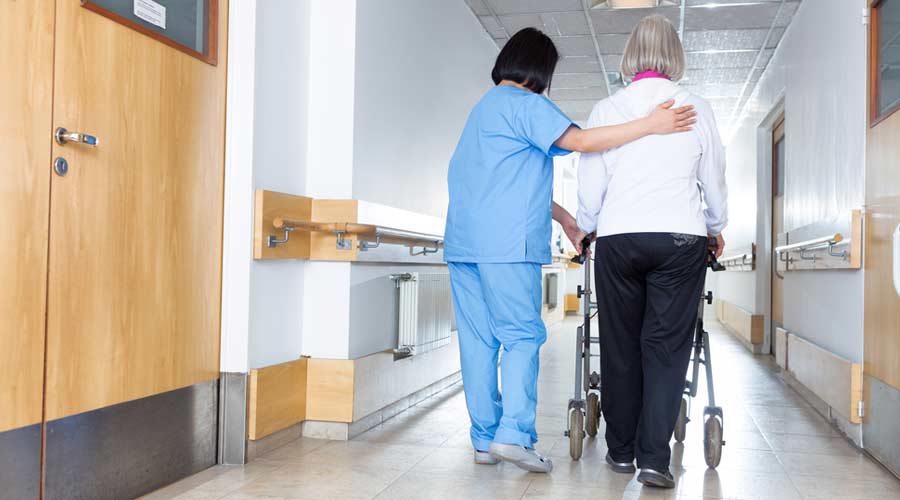The nation’s nursing homes provide ineffective care and are poorly staffed, and facilities are poorly designed and maintained as regulatory lapses go unenforced, according to a new report that called for sweeping changes in an industry whose challenges have been magnified by the pandemic.
The report from the National Academies of Sciences, Engineering, and Medicine covers a cross-section of issues plaguing long-term care. Among the facility-related recommendations are these.
Physical environment. “Although the nursing home’s physical environment is critical to residents’ quality of life, the nursing home infrastructure is aging, and most nursing homes resemble institutions more than homes,” according to the report. “Smaller, home-like environments play key roles in infection control and enhancing the quality of life for residents as well as staff.”
The report calls for:
- creating incentives for new construction and renovation of nursing homes to provide smaller, more home-like environments and smaller units within larger nursing homes
- ensuring that new designs include private bedrooms and bathrooms
- allowing flexibility to address a range of resident care and rehabilitation needs.
Emergency preparedness and response. “Prior to the COVID-19 pandemic, there were numerous examples of nursing homes being unprepared to respond to emergencies and natural disasters. For example, in 2016, the top deficiency cited in nursing homes was infection control (45.4 percent of citations). The COVID-19 pandemic provided undeniable evidence of the pernicious impact of this lack of planning and preparedness. To be better positioned to respond to emergencies of all types, nursing homes need to be included as integral partners in emergency management planning, preparedness, and response on the national, state, and local levels.” Recommendations designed to safeguard residents and staff against a broad range of potential public health emergencies and natural disasters include:
- reinforcement and clarification of the emergency support functions of the national response framework
- formal relationships between nursing homes and local, county, and state-level public health and emergency management departments
- representation of nursing homes in emergency and disaster planning and management sessions and drills
- ready access to personal protective equipment (PPE).

 Code Compliance Isn't Enough for Healthcare Resilience
Code Compliance Isn't Enough for Healthcare Resilience Ribbon Cutting Marks First Phase Completion for New Montefiore Einstein Facility
Ribbon Cutting Marks First Phase Completion for New Montefiore Einstein Facility Brooks Rehabilitation Launches 3 New Major Construction Projects
Brooks Rehabilitation Launches 3 New Major Construction Projects Joint Commission Standards: What Updates Matter Most?
Joint Commission Standards: What Updates Matter Most? Swinerton Completes Construction at Atlanta's Grady Hospital
Swinerton Completes Construction at Atlanta's Grady Hospital